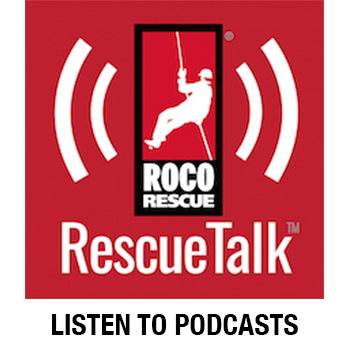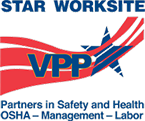![]() We recently received a question about what constitutes a prompt and capable rescue response for fallen workers at height suspended by their Personal Fall Arrest System (PFAS).
We recently received a question about what constitutes a prompt and capable rescue response for fallen workers at height suspended by their Personal Fall Arrest System (PFAS).
Question: My question concerns guidance on the number of rescue/standby team members needed for response to “worker at heights” type incidents. We work in a chemical plant, so it’s basically areas such as columns, etc.
For example, if the work area exposes the worker to an IDLH condition such as energized equipment, then the Fall Hazard Survey should trigger the “Rescue Plan” to include a near immediate rescue provision because of the potential of worker electrocution leading to a fall and subsequently, a suspended victim. In a situation like this, it is imperative that prompt rescue would provide a means to have the rescue subject in a position that allows CPR in less than 6 minutes — and preferably much faster than that! The only way to respond this quickly is to have a “Stand-by Rescue” posture where the rescue system and personnel are pre-rigged and ready to initiate the rescue immediately.
 For other situations, if communications with the rescue subject are established in six minutes or less, and it is determined that the victim is relatively unharmed (alert and oriented, good airway and breathing, and no signs of active bleeding) then the urgency is reduced and a more measured approach to the rescue could be employed. There is still the potential for suspension trauma to develop over a range of several minutes, so a “prompt” but measured rescue would still be necessary.
For other situations, if communications with the rescue subject are established in six minutes or less, and it is determined that the victim is relatively unharmed (alert and oriented, good airway and breathing, and no signs of active bleeding) then the urgency is reduced and a more measured approach to the rescue could be employed. There is still the potential for suspension trauma to develop over a range of several minutes, so a “prompt” but measured rescue would still be necessary.With this in mind, it is important for an employer with workers at height to complete a Fall Hazard Survey report to determine the most appropriate way to abate any fall hazards. If the use of PFAS is necessary, that triggers the need to complete fallen worker Rescue Preplans. The employer will need to identify the rescue assets and ensure they are available, equipped, and trained to perform safe and prompt rescue for any situation that they may be summoned to at the employer’s facility. For rescuers outside the employer’s workforce, it is important to thoroughly vet the prospective rescuers to make these assurances.
This information was provided by Pat Furr, Roco Chief Instructor and Technical Consultant. He regularly assists Roco customers in identifying opportunities to improve their fall protection programs and can guide safety professionals in the completion of Fall Hazard Survey reports. Roco can also assist in the development of fallen worker Rescue Preplans. For help with selecting the proper equipment or training, call us at 800-647-7626.


 Question: If I close and Lockout/Tagout the main valve on the natural gas line supplying a boiler unit – does this satisfy OSHA’s requirement for eliminating the hazard of a permit required confined space?
Question: If I close and Lockout/Tagout the main valve on the natural gas line supplying a boiler unit – does this satisfy OSHA’s requirement for eliminating the hazard of a permit required confined space?.jpg) Here’s an “ON THE ROAD” segment by Roco Chief Instructor and Director of Training, Dennis O’Connell.
Here’s an “ON THE ROAD” segment by Roco Chief Instructor and Director of Training, Dennis O’Connell.  Roco’s Industrial Rescue I/II class provides rescue skills and techniques to handle the vast majority of rescues a team would face in a plant or refinery. The class covers both inert rescue procedures as well as on-air IDLH entry rescue. The first three days are dedicated to skills and techniques while the last two include a variety of scenario-based exercises using the skills learned. One of the nice things about the Beaumont facility is the ability to practice rescues from all six types of confined spaces as referenced in OSHA 1910.146 as well as practicing rescue from height which is often overlooked during confined space training.
Roco’s Industrial Rescue I/II class provides rescue skills and techniques to handle the vast majority of rescues a team would face in a plant or refinery. The class covers both inert rescue procedures as well as on-air IDLH entry rescue. The first three days are dedicated to skills and techniques while the last two include a variety of scenario-based exercises using the skills learned. One of the nice things about the Beaumont facility is the ability to practice rescues from all six types of confined spaces as referenced in OSHA 1910.146 as well as practicing rescue from height which is often overlooked during confined space training. For our readers who may use Petzl GriGri 2’s, we wanted to make you aware of this recall. Please check the serial number of your device to see if it’s in this range. You will also need to contact Petzl as indicated below. As noted, this does not apply to the previous generation GriGri.
For our readers who may use Petzl GriGri 2’s, we wanted to make you aware of this recall. Please check the serial number of your device to see if it’s in this range. You will also need to contact Petzl as indicated below. As noted, this does not apply to the previous generation GriGri. Roco Rescue, Inc. and the Beaumont Emergency Services Training Complex (BEST Complex) have announced a partnership to deliver more options in rescue training for fire departments and industry.
Roco Rescue, Inc. and the Beaumont Emergency Services Training Complex (BEST Complex) have announced a partnership to deliver more options in rescue training for fire departments and industry. Based on the early success of the partnership, both Roco and BEST say they will be adding more dates and courses to the 2012 open-enrollment training schedule. New offerings will include Confined Space, High Angle, Structural Collapse and Trench Rescue. This will provide additional training options for municipal and industrial rescue teams in the area. It’s a win-win-win.
Based on the early success of the partnership, both Roco and BEST say they will be adding more dates and courses to the 2012 open-enrollment training schedule. New offerings will include Confined Space, High Angle, Structural Collapse and Trench Rescue. This will provide additional training options for municipal and industrial rescue teams in the area. It’s a win-win-win.


